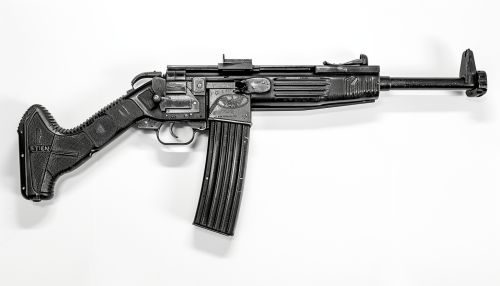Sten
Overview
The Sten is a family of British submachine guns used extensively by British and Commonwealth forces throughout World War II and the Korean War. They were notable for having a simple design and very low production cost making them effective insurgency weapons for resistance groups, and they continue to see usage to this day by irregular military forces.


History
The Sten emerged while Britain was engaged in the Second World War. The war had created a pressing demand for large quantities of submachine guns, and the existing production could not meet this demand. The Sten was designed in 1940 by Major Reginald V. Shepherd and Harold Turpin, who worked at the Enfield Lock and Small Arms Factory. The name "Sten" is derived from the names of the weapon's chief designers.
Design
The Sten uses a simple blowback operating system with a fixed firing pin. It fires from an open bolt. The tube on which the barrel is mounted protrudes a few inches beyond the barrel and is fitted with a wooden, steel, bakelite, or plastic foregrip. The models of the Sten varied in design, but all were made from stamped metal and minimal welding.
Variants
There were six main variants of the Sten, though there were many minor alterations and improvements made during production. The main variants are the Mark I, Mark I*, Mark II, Mark III, Mark IV, and Mark V.
Usage
The Sten was extensively used by the British and Commonwealth forces throughout World War II and the Korean War. Its low cost and ease of manufacture made it popular with resistance forces and irregular military groups. It was also used by the German, Italian, and Japanese forces, who captured and repurposed the weapon.
Legacy
The Sten has a lasting legacy and continues to influence modern firearm design. Its simplicity and effectiveness have made it a popular choice for irregular forces and resistance groups worldwide.
